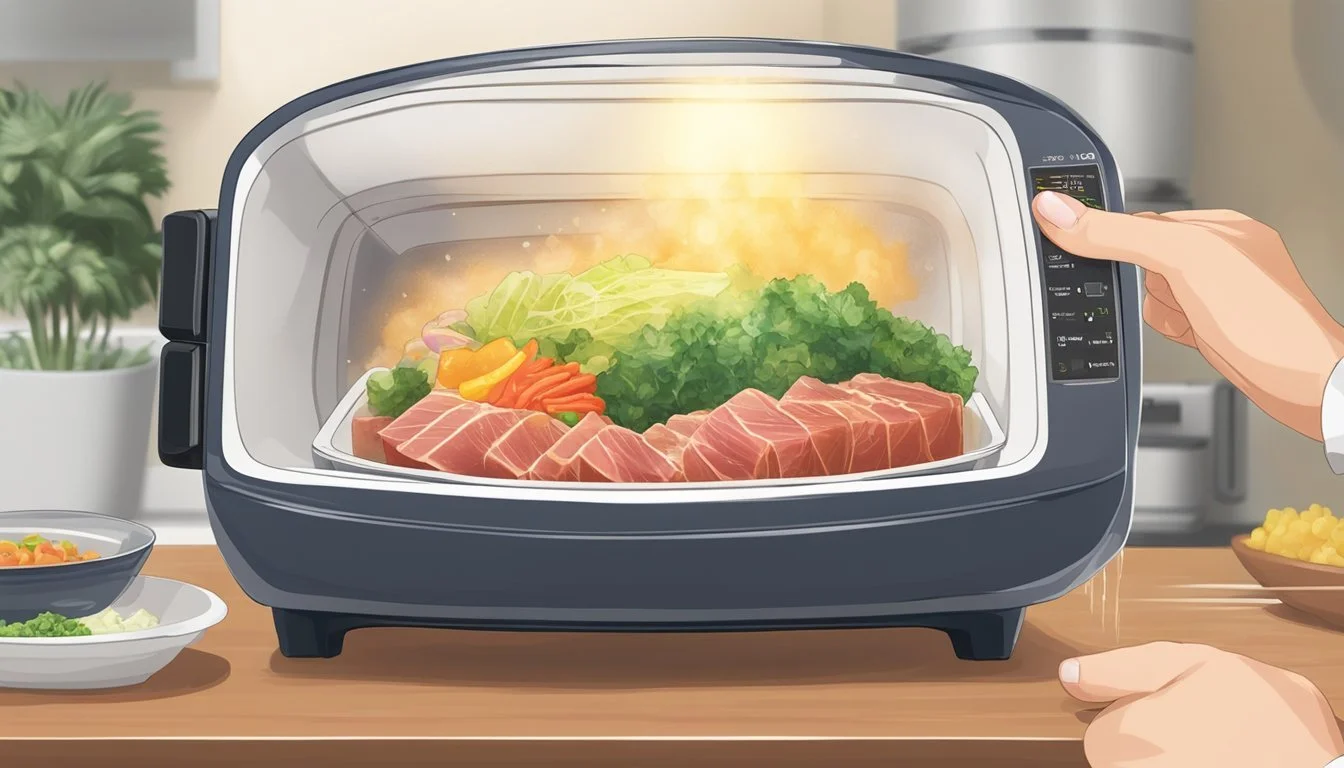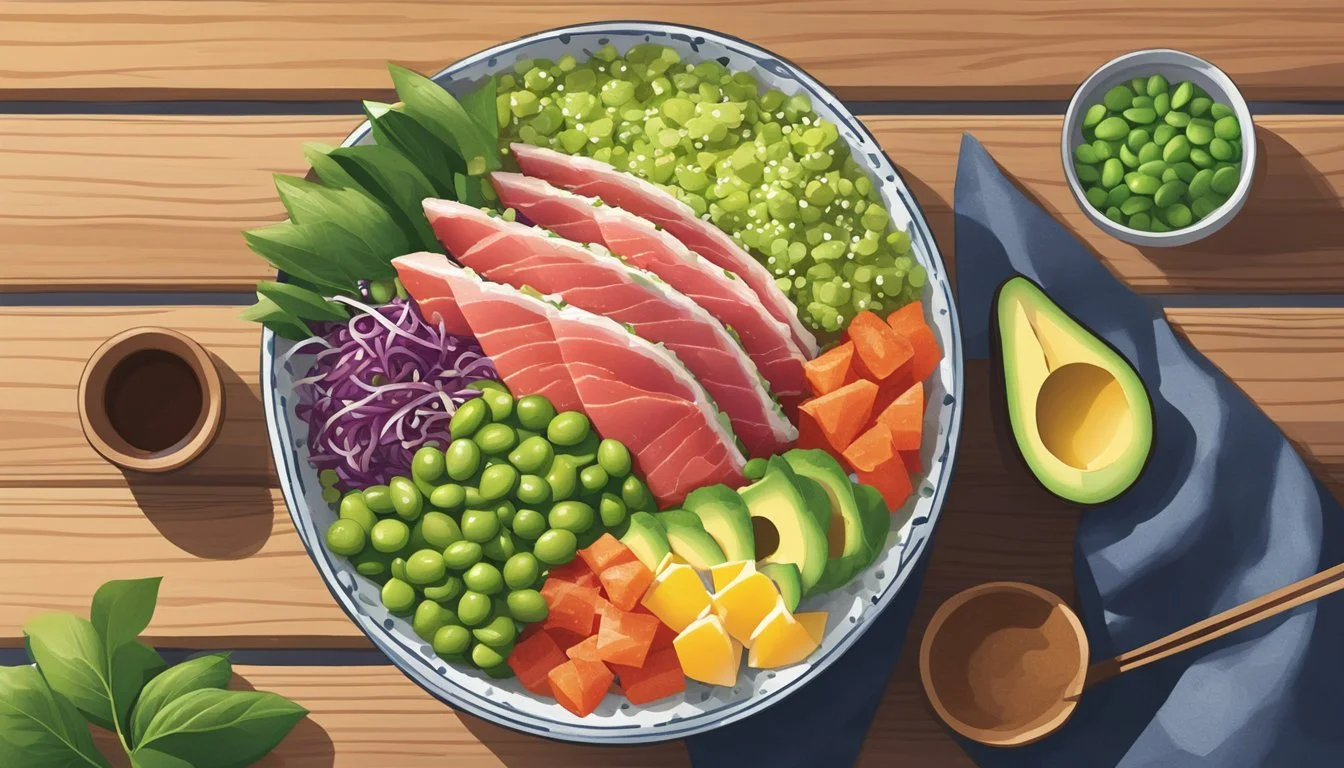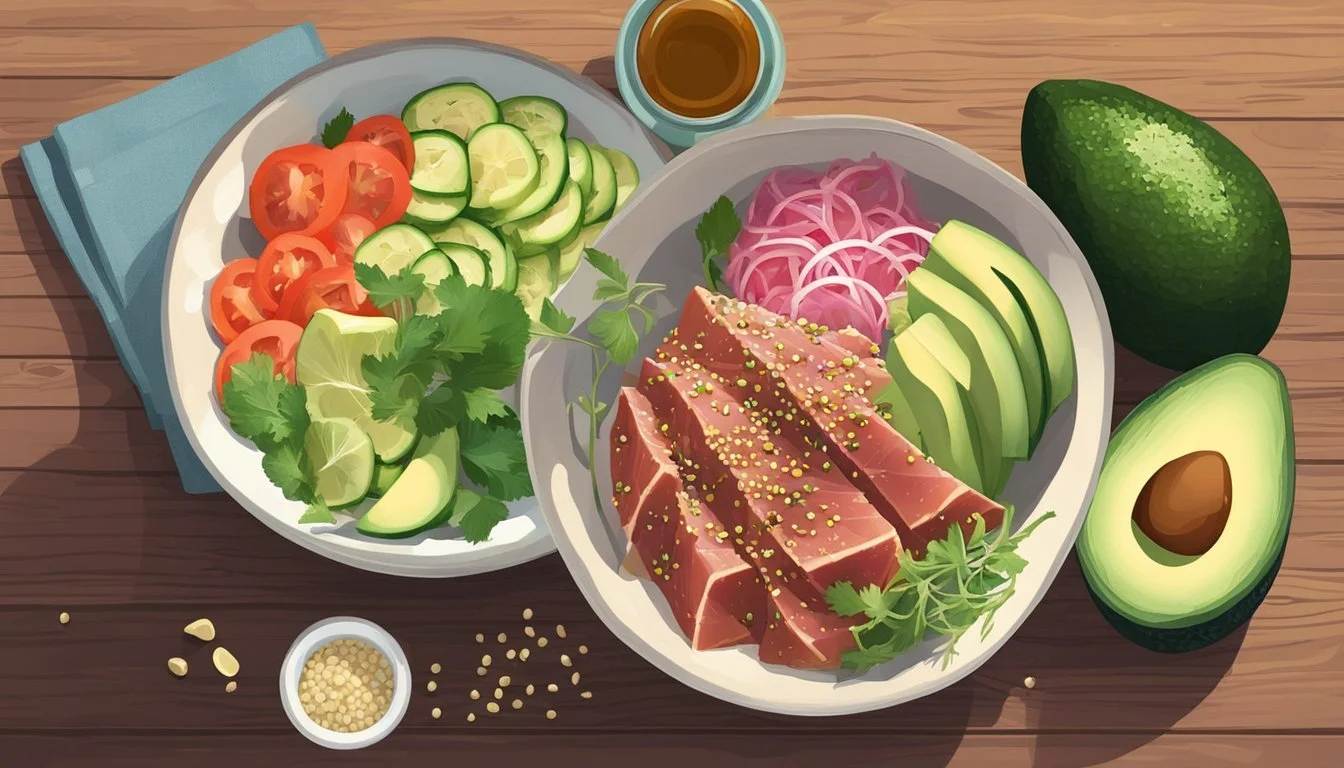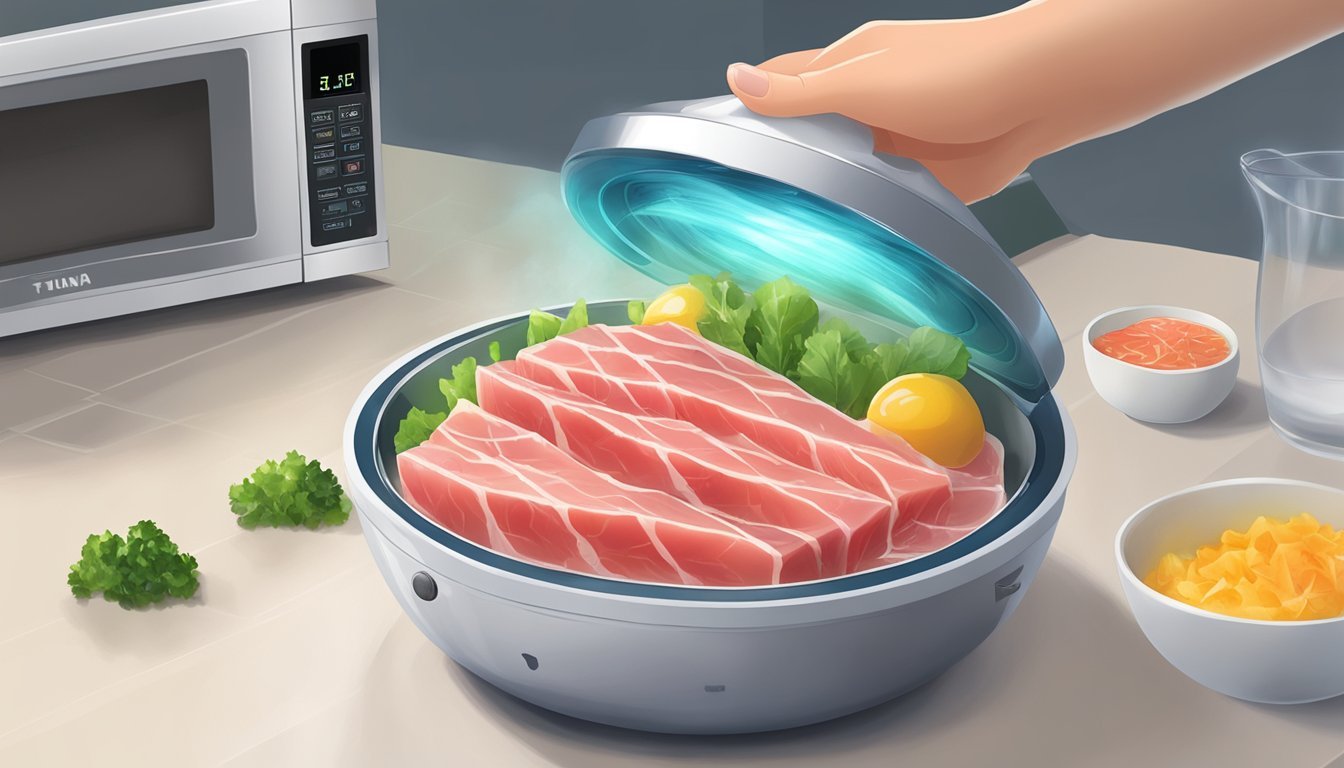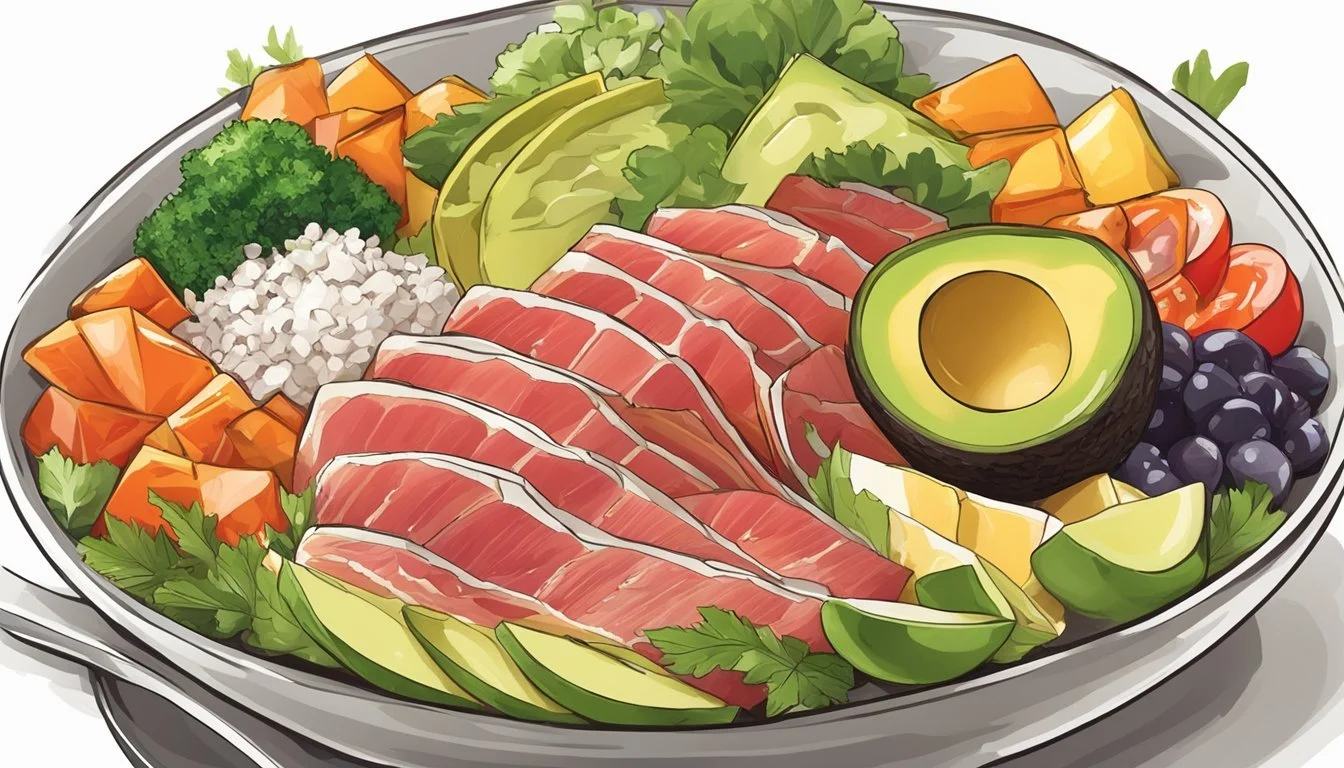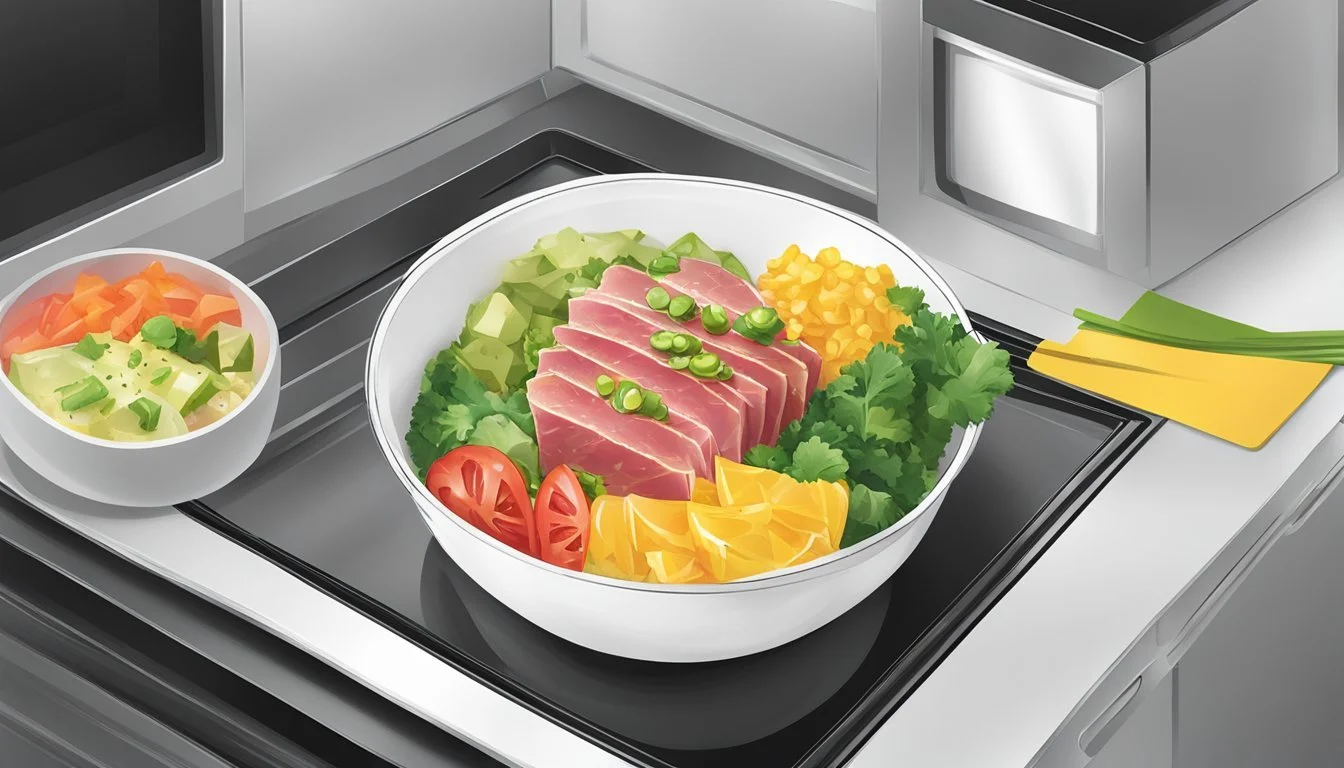Best Way to Reheat Ahi Tuna Poke Bowl
Keeping It Fresh and Flavorful
Reheating a poke bowl, especially one with delicate ahi tuna, requires careful attention to preserve the texture and flavor of the fish. Ahi tuna is best enjoyed when it retains its freshness and doesn't become overcooked in the reheating process. This is particularly challenging with poke bowls, as they are typically served cold and include a variety of other ingredients besides fish, such as rice, vegetables, and sauces, each with their own optimal serving temperatures.
The goal when reheating ahi tuna poke bowls is to reach a temperature that is pleasant for eating, without compromising the integrity of the ahi tuna. It's about finding a method that gently warms the fish without cooking it further, as ahi tuna is most flavorful when enjoyed medium-rare to rare. Microwave usage can be one of the methods, set at a medium power level and utilizing short intervals, allowing for stirring between sessions to evenly distribute the heat. This technique can ensure the tuna warms up without losing its fresh, delicate nature.
Preserving the quality of fresh ahi tuna when reheating is paramount. This involves avoiding high heats and long cooking times that can toughen the fish and diminish its unique, sashimi-like taste and texture. The ideal approach includes allowing the tuna to come to room temperature before gently heating it through, ensuring that the fish remains succulent and the poke bowl's inherent freshness shines through.
Understanding Ahi Tuna and Poke Bowls
A poke bowl is a traditional Hawaiian dish that features chunks of fresh ahi tuna and various flavorful components, reflecting the influence of Japanese cuisine in its use of sashimi-grade fish and accompaniments like sushi rice and nori.
Types of Ahi Tuna
Ahi tuna refers to two species: yellowfin and bigeye tuna. Both types are used in poke bowls and are prized for their rich, firm texture. Sushi-grade ahi is a common term for the highest quality tuna that is considered safe and ideal for raw consumption in dishes like sushi and poke.
Components of a Poke Bowl
The foundation of a poke bowl is the poke, meaning "to slice or cut" in Hawaiian, which refers to the cubed ahi tuna. This is typically marinated in poke sauce, a blend of ingredients like soy sauce (shoyu), sesame oil, sea salt, and sometimes sesame seeds or crushed red pepper. A base of rice supports the marinated fish, often complemented by nori strips, while an assortment of toppings like avocado, onions, and cucumbers adds texture and variety.
Popularity of Poke Bowls
Poke bowls have surged in popularity beyond their Hawaiian origins, particularly in areas with vibrant culinary scenes inspired by Asian cuisine. Their appeal lies in the freshness of ahi tuna poke, combined with the customizable nature of the bowls and the healthy, light profile of the meal. Poke encapsulates a unique blend of cultural influences, drawing from Hawaiian traditions and Japanese techniques like those used in making sushi and sashimi.
Storing Ahi Tuna Poke Bowls
When it comes to preserving the freshness of Ahi Tuna Poke Bowls for later consumption, proper storage is crucial. Whether it's refrigerating to keep for the short term or freezing for extended periods, the techniques used can significantly affect the quality of the poke.
Refrigeration Best Practices
For refrigerating poke bowls, the aim is to maintain the freshness of the raw tuna while ensuring the overall quality of the poke components does not deteriorate. The following are specific recommended practices:
Temperature: Store leftovers in the refrigerator at a temperature below 40°F (4°C) to prevent bacterial growth.
Container: Use airtight containers to prevent contamination and odor transfer.
Separation: If possible, store raw fish separately from other components like rice and vegetables to avoid sogginess and maintain the integrity of each ingredient.
Freezing and Thawing Techniques
While freezing is a less ideal option for poke bowls, given the delicate nature of raw fish, it can be done with careful consideration. Here's how:
Freezing: If one chooses to freeze poke, do so immediately after preparation. Store raw tuna in freezer-safe bags or containers, pressing out excess air. Other ingredients should ideally be stored separately.
Thawing: To thaw frozen poke, transfer it to the refrigerator and allow it to gently defrost overnight. Rapid thawing can compromise texture and flavor, therefore, avoid using warm water or microwaves for this purpose.
Best Reheating Methods
When reheating Ahi Tuna Poke Bowls, one aims to preserve the dish's freshness while ensuring it's warmed to the perfect temperature. The following reheating techniques focus on maintaining moisture, avoiding high heat, and using appropriate kitchen appliances to reheat the tuna without overcooking.
Oven Reheating Technique
To maintain the Ahi Tuna's texture in a Poke Bowl during reheating, using an oven set to a low temperature is crucial. Preheat the oven to 275°F to avoid high heat, which can lead to overcooking.
Method:
Allow the tuna to reach room temperature.
Place it on a baking sheet lined with parchment paper.
Loosely cover with aluminum foil to trap moisture.
Heat for 10-15 minutes, checking for desired warmth.
Microwave Heating Instructions
The microwave can be a quick method to reheat a Poke Bowl, but it must be at a reduced power setting.
Steps:
Arrange the Poke Bowl evenly.
Set the microwave to 50%-70% of its full power.
Heat in 30-second intervals, stirring between each to distribute heat.
Check the temperature of the fish before consuming.
Using a Non-Stick Pan
For those preferring the stovetop, a non-stick pan offers a way to gently heat the Ahi Tuna.
Guidelines:
Heat the pan over medium heat.
Add the Ahi Tuna, stirring occasionally to ensure even reheating.
Remove from heat as soon as the tuna is sufficiently warmed, usually within a few minutes.
Preventing Overcooking During Reheat
Ahi tuna poke bowls are best enjoyed when the fish retains its delicate texture and flavor. The key to reheating such a dish is to prevent overcooking the ahi tuna, ensuring it retains its intended rare or medium-rare state.
Managing Heat Levels
It's crucial to control the heat level to prevent the proteins in the ahi tuna from tightening and becoming tough. One should opt for a medium heat setting whether using a stove or an oven. Here's a structured approach to manage heat effectively:
Stovetop: Heat a pan over medium heat and warm the poke bowl components separately, gently bringing the ahi tuna to the desired temperature without actually cooking it further.
Oven: Preheat the oven to no more than 275°F. Place the ahi tuna steak on a baking sheet and heat it for a short duration.
By maintaining medium heat, one allows for a gentle warm-up, necessary to preserve the quality of the ahi tuna steak.
Monitoring Cooking Time
To ensure the ahi tuna does not surpass the rare to medium-rare threshold, watch the clock closely:
Method Internal Temperature Approximate Cooking Time Oven 145°F for medium-rare 10-15 minutes Pan Warm to the touch 1-2 minutes per side
Using a meat thermometer when reheating in the oven can help maintain an internal temperature of around 145°F, considered ideal for medium-rare tuna. On the stove, the fish should be just warm to the touch indicating it has been warmed through but not overcooked. Monitoring cooking time and using tools like a thermometer can safeguard against overcooking, helping preserve the texture and flavor of the tuna.
Tips for Preserving Freshness and Flavor
When reheating a poke bowl, maintaining the dish's inherent freshness and flavor is paramount. The following strategies focus on enhancing the bowl's taste profile and texture after reheating.
Adding Fresh Ingredients Post-Reheat
One effective method to revitalize a poke bowl is by introducing fresh ingredients once the reheated portion has reached the desired temperature. This can include dicing avocados, chopping cucumbers, and adding a garnish of sesame seeds. Drizzling a small amount of sesame oil or olive oil can also restore some of the dish's original richness. Furthermore, consider adding a touch of brightness with lemon juice or fresh grated ginger to amplify the flavors.
Avocados: Dice and add to the bowl
Cucumbers: Chop and incorporate for crunch
Sesame Seeds: Sprinkle as a garnish
Sesame/Olive Oil: Drizzle to enhance richness
Lemon Juice/Grated Ginger: Add for a fresh zing
Tempering to Room Temperature
To prevent cooking the fish further, the poke bowl should be brought gently to room temperature before any heat is applied. This step is critical to avoid toughening the texture of the ahi tuna and to ensure that the warm and cold elements in the bowl meld together harmoniously when consumed. Ingredients such as soy sauce, pickled ginger, or a hint of garlic that might have been part of the original dish's dressing, benefit from coming to room temperature as it helps in releasing their full bouquet of flavors.
Enhancing the Poke Bowl Experience
Enhancing the poke bowl experience revolves around selecting the right toppings and condiments for a burst of flavors and experimenting with side dishes that complement the main dish to create a balanced meal.
Toppings and Condiments
The choice of toppings and condiments can make a significant difference in the poke bowl. To maintain the integrity of the dish, it's essential to honor the balance between the dish's inherent umami flavors and fresh textures.
Sesame Seeds: A sprinkle of toasted sesame seeds adds a nutty taste and a delicate crunch.
Nori: Thinly sliced nori (seaweed) contributes to the poke bowl's oceanic flavor.
Avocado: Creamy avocado slices introduce a rich, buttery texture and are a source of healthy fats.
Green Onions: Chopped green onions provide a sharp, fresh bite that cuts through the richness.
Togarashi: A light dusting of togarashi spice blend can add both color and a gentle heat.
Edamame: Edamame beans can be shelled or kept in the pod, offering a satisfying chew and a pop of green.
Condiment Recommendations:
Condiment Description Pairing Note Soy Sauce Provides a salty umami flavor that deepens the taste. Use sparingly to avoid sogginess. Sesame Oil A drizzle enhances the bowl's aroma and adds to the umami. A little goes a long way. Seaweed Salad Adds a briny taste and textural contrast. Serve on the side or mixed in.
Side Dishes and Pairings
While poke bowls can stand alone as a fulfilling meal, the addition of side dishes can elevate the dining experience by offering contrasting textures and flavors that cleanse the palate.
Salad: A light salad dressed with a citrusy vinaigrette can offset the poke bowl's savory notes.
Salad Pairing Suggestion:
Ingredient Benefit Pairing Note Citrus Fruits Offers a bright, tangy counterpoint. Complements the poke's richness. Leafy Greens Adds freshness and balances the meal. Choose diverse greens for texture.
Side dishes should not overwhelm the main dish but instead, work in harmony, accentuating the poke bowl's freshness and providing a platform for the various flavors and textures to shine.
Health and Safety Considerations
When reheating a poke bowl, it's crucial to handle the ahi tuna carefully to maintain its quality and ensure it's safe to eat. The content addresses specific health and safety risks associated with reheating raw fish and provides guidance on achieving proper food temperatures.
Risks of Reheating Raw Fish
Reheating a poke bowl containing raw ahi tuna poses certain risks since raw fish is susceptible to bacterial growth. Poke, traditionally made with raw ahi tuna, should be stored at temperatures below 40°F to slow bacterial proliferation. When reheating:
Avoid recooking the fish; instead, gently warm it to preserve texture.
Do not reheat poke that has been left at room temperature for more than 2 hours.
Ensuring Proper Food Temperatures
To ensure food safety, one must be vigilant about internal food temperatures. The goal is to warm the ahi tuna just enough without promoting bacteria growth or overcooking it. The internal temperature of the reheated ahi tuna should reach but not exceed 145°F for food safety while striving to maintain the quality of the poke.
Use a food thermometer to check the internal temperature.
Aim for a swift but gentle reheating process at medium power if using a microwave, or using low heat in an oven.

